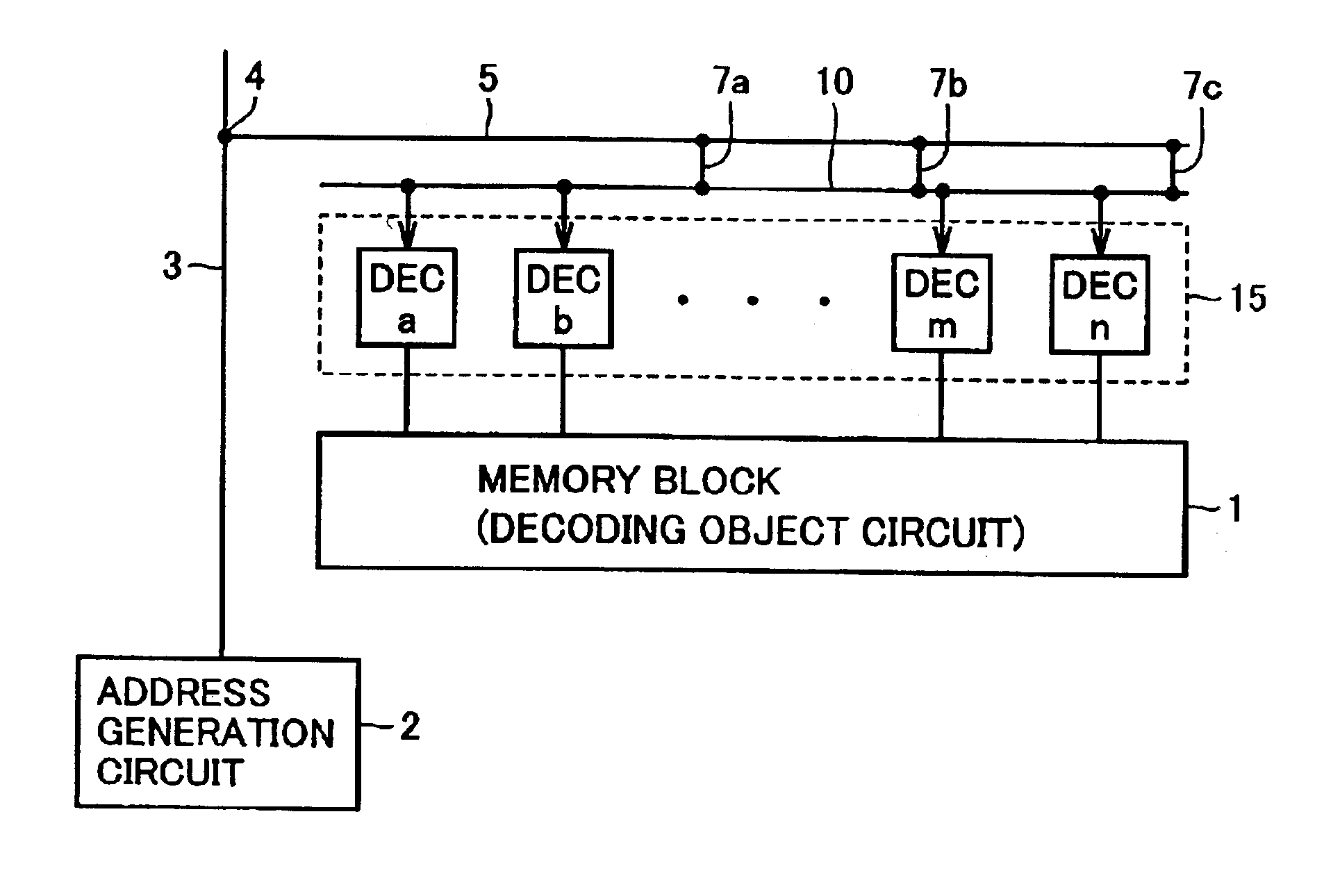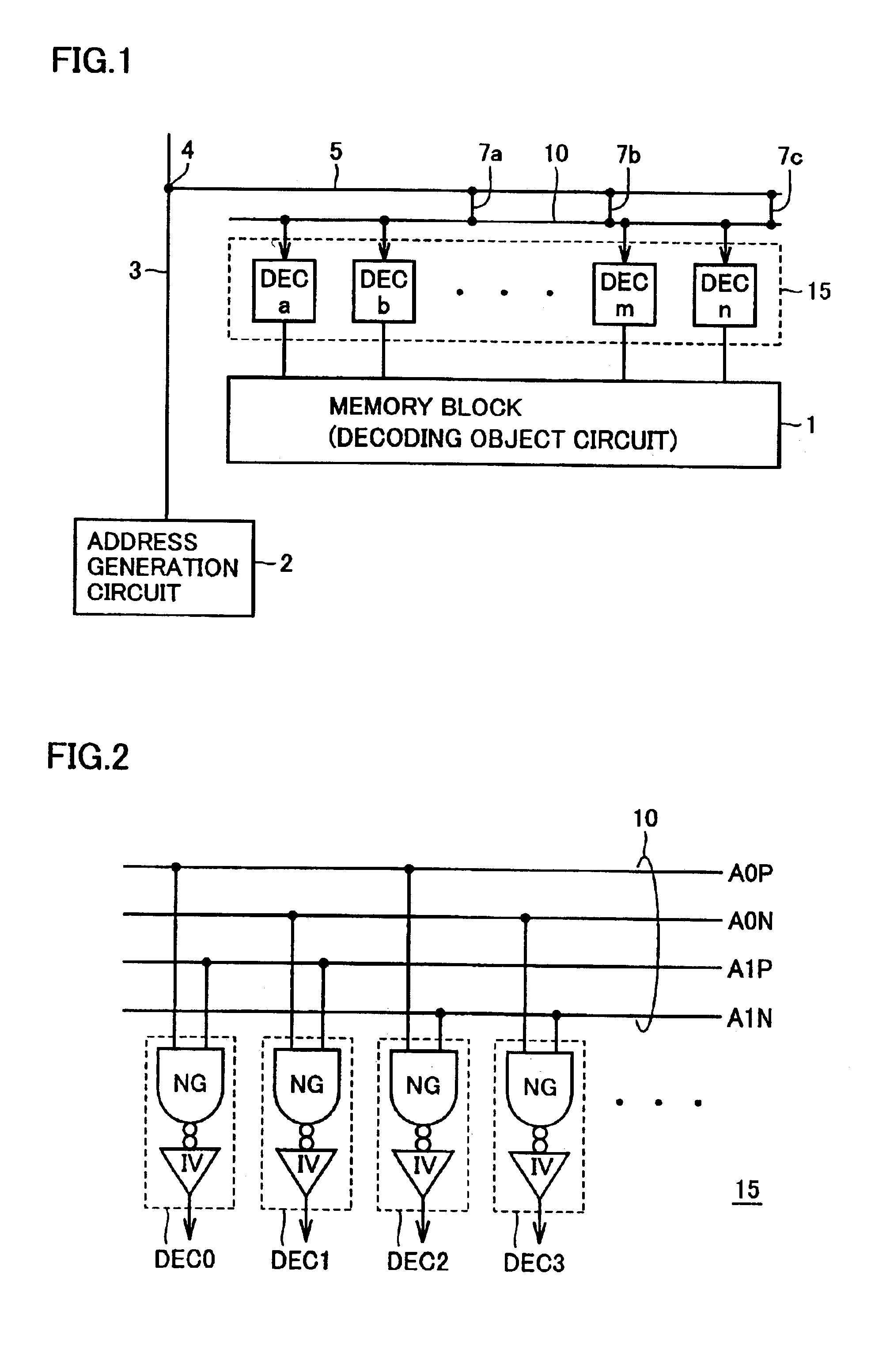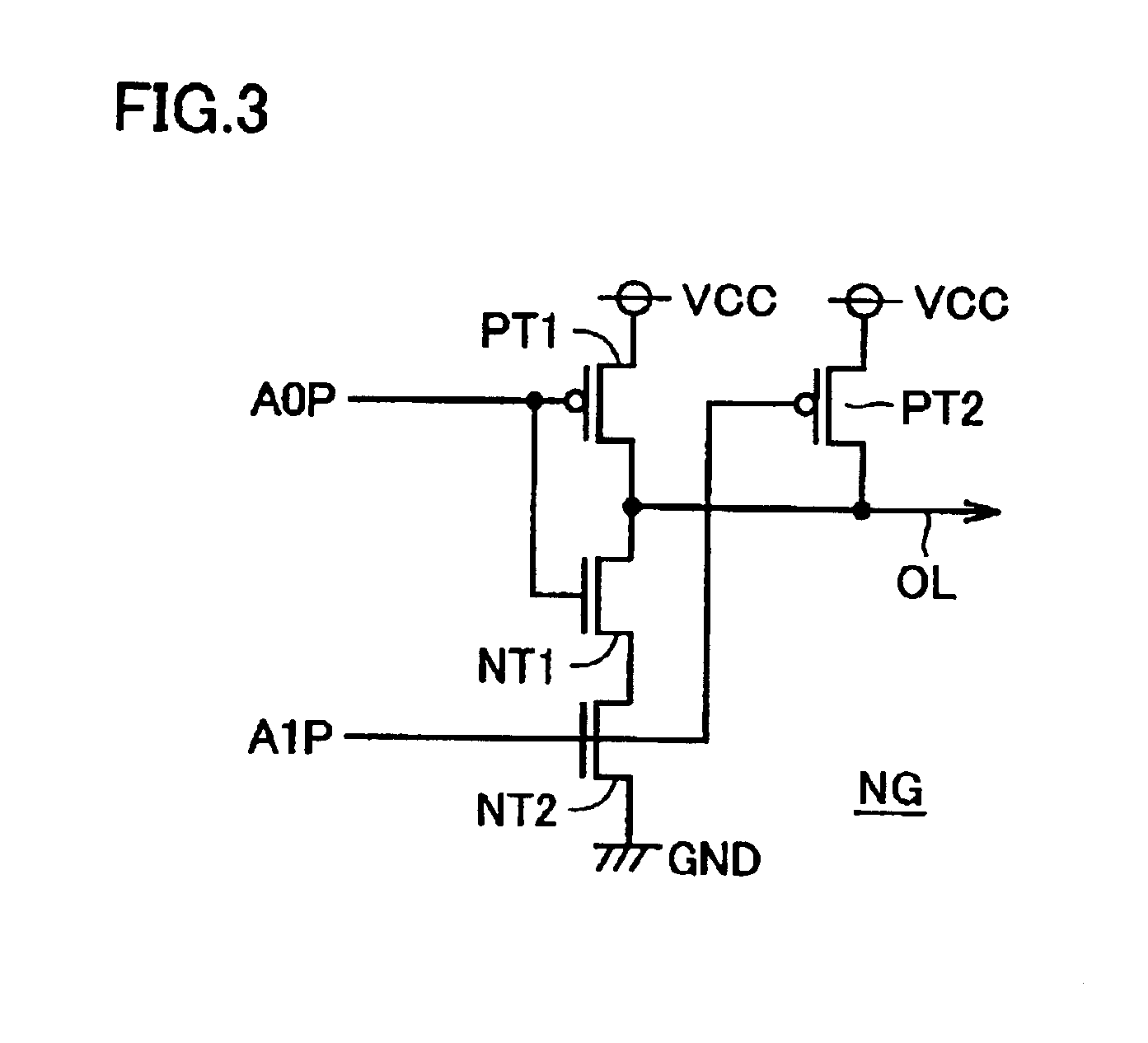Semiconductor circuit device capable of high speed decoding
a high-speed decoding and circuit device technology, applied in electronic switching, instruments, pulse techniques, etc., can solve the problems of large load on the address signal line, delay in the change of the address signal, and longer access cycle time, so as to achieve the effect of reducing the number of operation cycles
- Summary
- Abstract
- Description
- Claims
- Application Information
AI Technical Summary
Benefits of technology
Problems solved by technology
Method used
Image
Examples
Embodiment Construction
In the description above, the address decoding circuit for decoding an address signal is discussed. The present invention, however, can be applied to a configuration in which predecode signals in place of the address signal bits are transmitted and the predecode signals are further decoded.
A layout of the decoder is also not limited to the layout shown in FIG. 4, and the decoder may have another layout.
Generally, the present invention can be applied to any circuitry having the same circuit structure repeatedly arranged, decoding a received signal of a plurality of bits, and selecting an operation mode or an element according to the decoding result.
In addition, the number of address bits are not limited to four bits and, generally, the signal may be a designation signal of N bits specifying a selection object.
As described above, according to the present invention, the second interconnection lines are connected at a prescribed spacing to the first interconnection lines connecting to a...
PUM
 Login to View More
Login to View More Abstract
Description
Claims
Application Information
 Login to View More
Login to View More - R&D
- Intellectual Property
- Life Sciences
- Materials
- Tech Scout
- Unparalleled Data Quality
- Higher Quality Content
- 60% Fewer Hallucinations
Browse by: Latest US Patents, China's latest patents, Technical Efficacy Thesaurus, Application Domain, Technology Topic, Popular Technical Reports.
© 2025 PatSnap. All rights reserved.Legal|Privacy policy|Modern Slavery Act Transparency Statement|Sitemap|About US| Contact US: help@patsnap.com



